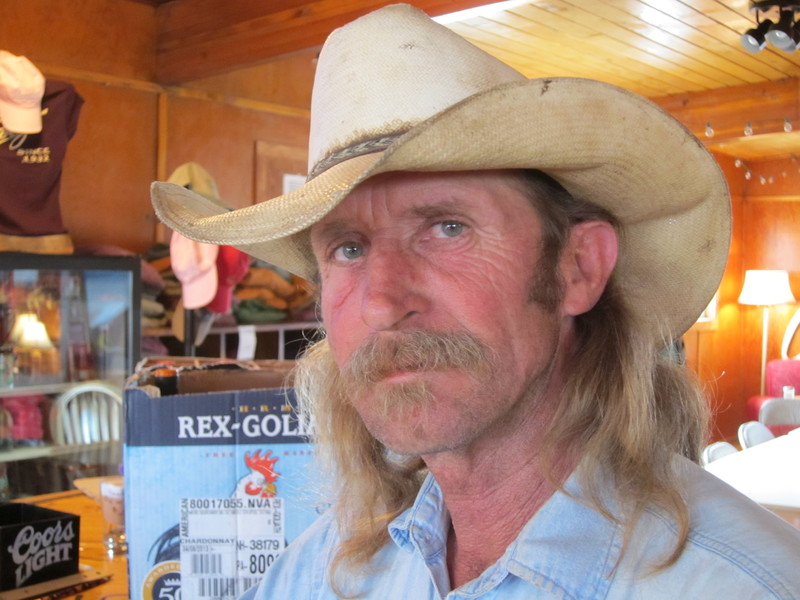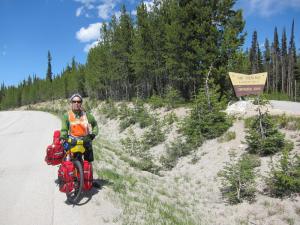SEA TO SHINING SEA: Out of Bitterroot, into Big Hole Valley
DAY 30: Stacking hay across America. The sign coming into Wisdom, Montana says it's the land of 10,000 haystacks. It says nothing about the mosquitoes that come with the hay. So here's what happens, according to the waitress at The Crossing – where we recharged with buffalo burgers – and Al the cowboy.
Snowmelt water coming off the east side of The Rockies’s Bitterroot Range charges the Big Hole River here in the valley of the same name. Ranchers divert some of that water into low-lying hay meadows. That floods the meadows to help the ranchers get a thick crop of grass hay to feed their beef cattle after the summer and fall pasture season ends. While the flooding brings the natural grass up to a couple feet in height, the soggy meadows also prove ideal for mosquito hatching.
Not sure that's what Lewis and Clark referred to when they used the Wisdom name for the smaller river that flows into the Big Hole here. “We're a river town,” said the waitress. “That's why we're called Wisdom.”
Between sips out of long-neck Budweisers, Al told us his boss works about 12,000 head of beef cattle - mostly Black Angus – on 52,000 acres. “I ride cattle some, mend fences some, pitch hay some. Do whatever I'm told to do. Been at it here for about 12 years. Before that I drifted around: Wyoming, Arizona, Mexico way. Working here and there and having fun. I've had a lot of fun, but starting to slow down now.”
Eagles: “Desperado, you better come to your senses, been out riding fences for so long.”
By the time we left with an eye toward the Nez Perce Motel - $58.95 – the truck drivers for a local supply company who had left a meeting at The Crossing, were coming out of The Antlers across the street.
“Watch out for the mosquitoes,” they hollered as we rolled past. No problem seeing them. When we were sitting inside The Crossing, you could see them in the dusty air outside like a fine drizzle.
“They'll drain the meadows starting about July 15,” said Al. “By mid-August, seeing a mosquito here will be a rarity.” When the hay is cut, it has traditionally been stacked across meadows in great big piles. With the newer equipment, not so much any more.
The sad story of this area is the 1877 Battle of the Big Hole between a company of the US Army and the Nez Perce tribe. It's a long story about clashes arising out of the forced relocation of Native American people from their ancestral lands. Not one of our nation's finest hours. It reminds me of one of my favorite T-shirts that shows a group of Native Americans on horseback. Below it says: “Sure you can trust the government. Ask any Indian.”
Thanks to Elizabeth for her note about the field of yellow plants near Grangeville, Idaho. She said the field was probably canola for making vegetable oil.
We logged 58 miles today including 4,948 feet of ascent. Averaged 8.8 mph. We crossed the Continental Divide at Chief Joseph Pass – named for the chief of the Nez Perce who was trying to move his people when they were attacked by the Army.
Total now is 1,147 miles.
|
Follow our cross-country bicycle journey on Facebook by liking Sea to Shining Sea » |
||||



























































